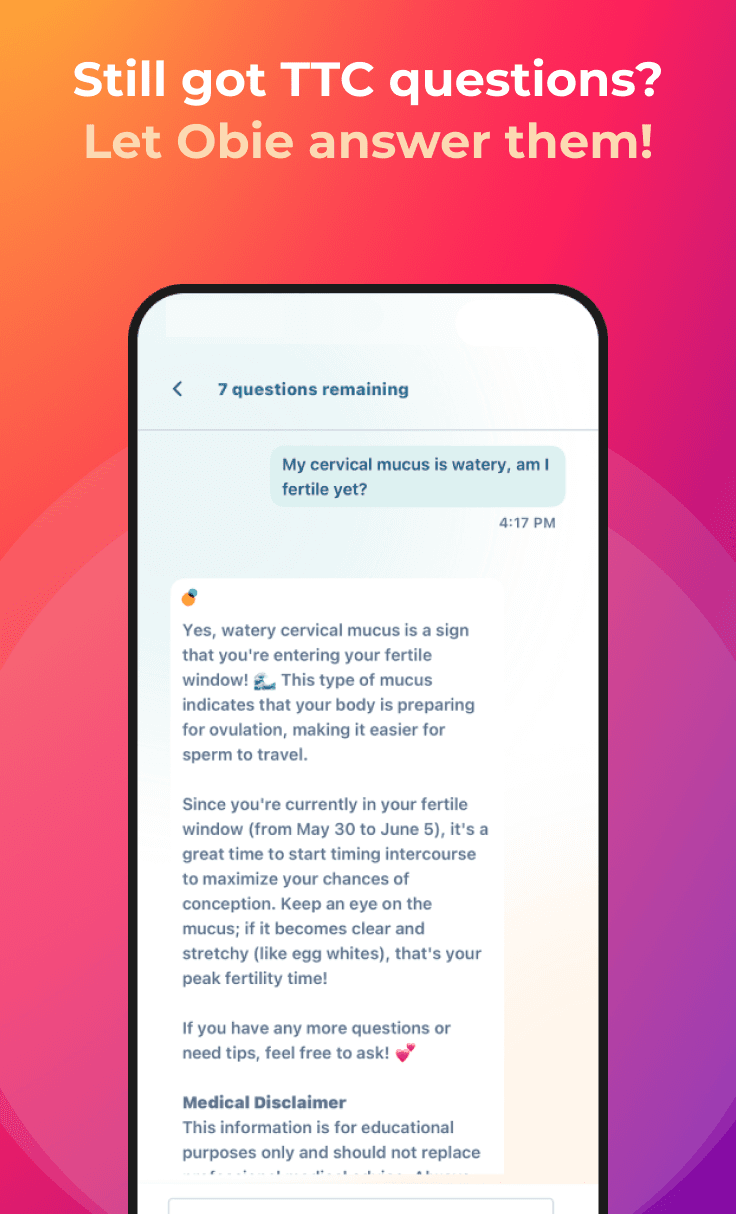Can I Get Pregnant With Only One Ovary?
Conception
Obie Editorial Team

How does ovulation take place when you have one ovary?
Ovulation is the monthly release of an egg from the ovary, and it happens at random. Most women have two ovaries: one on the right and one on the left. Ovulation can occur each month from either one or the other ovary as long as there is at least one Fallopian tube present and intact.
How can you get pregnant with one ovary?
When one ovary has been removed, or if a woman is born with only one ovary, then the remaining ovary usually takes over the entire process of ovulation, releasing each month on average an egg from that single ovary which is then being picked up by a fallopian tube.
Your fertility can be impacted by many things. Take our new fertility quiz and see how much you know!
Getting pregnant with one ovary is not only possible but usually no more difficult than with two ovaries. More important is whether the fallopian tube is intact. A fallopian tube is a small tube that connects the ovary to the uterine cavity. If the fallopian tube is missing, if there is no fallopian tube between the ovary and the uterus, or there is scar tissue and the tube is not functioning, then natural conception is very unlikely.
In order to get pregnant, there are three necessary components that must be present:
- Healthy sperm cells, which are produced by the male and deposited into the female reproductive tract
- A healthy egg cell, which is released by one of the ovaries each month.
- The fallopian tube, which connects the uterus with the ovary and allows the sperm to move up towards the ovary, to get fertilized, and to move down towards the uterus for implantation.
Ordinarily, a woman has two ovaries that are connected by the fallopian tubes to either side of the uterus. The ovaries take turns, though not in any particular order, releasing an egg, a process known as ovulation. The released egg travels down the fallopian tube and enters the uterus. If present, sperm cells will fertilize the egg in the fallopian tube, before it enters the uterus.
What if you are missing one or both fallopian tubes?
If one fallopian tube is absent, then the other fallopian tube can pick up the fertilized egg, as long as the tube is intact. However, if both fallopian tubes are missing or they are not intact, then the fertilized egg is unable to travel toward the uterus and the sperm is unable to travel towards the egg. Fertilization is not possible if egg and sperm cannot meet. If fertilization somehow happens, but the fertilized egg implants outside the uterus, then there is an increased risk of an ectopic pregnancy, a pregnancy that implants outside the uterus. If both fallopian tubes are missing, IVF or in vitro fertilization is required to get pregnant. In this case, the ovaries are stimulated by medication to produce lots of eggs, which are then surgically removed. The eggs are fertilized in the lab with your partner’s sperm and the resulting embryos are transferred back into the uterus.
The good news is that in either case pregnancy is possible, though in certain situations fertility treatments may be required. If you are unsure whether you’ll be able to get pregnant on your own, don’t hesitate to make an appointment with a fertility specialist.









